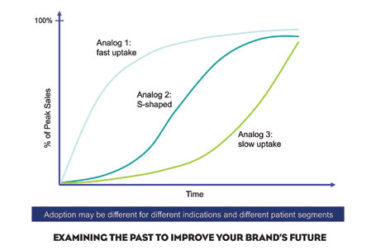
When budgets are tight and you are asked to do more with less, it is more critical than ever to have all elements of a campaign working together and maximizing each other, just like instruments in a world-class orchestra.
Most pharmaceutical marketers and their agencies say they feel strongly about the importance of integration and integrated multi-channel campaigns. Some brand teams approach integration by meeting quarterly with their agency partners, each representing a different channel. Some marketers integrate through monthly conference calls in which agencies take turns talking about their individual activities on behalf of the brand. Others like to have the agencies work together on planning, culminating in each channel represented on a campaign template.
Conceptually, the shared goal of integration in multichannel efforts is very much alive and well with all parties enthusiastically in their seats at the table. Honorable intentions are abundant. As is so often the case, however, just being there with good intentions, no matter how noble, isn’t enough. Working individually together isn’t integration. Working together is. The CEO of a company I once worked for defined successful campaign integration as a symphony—a confluence of several different instruments being played simultaneously by accomplished musicians, yet each instrument enhances the other resulting in moving and memorable music. When, on the other hand, those same musicians play their instruments just as skillfully, at the same time but individually, the result is a discordant cacophony.
In today’s intense, competitive environment, with budgets lean and getting leaner, no pharmaceutical brand can afford a marketing cacophony. The first step is to throw out the old playbook that has all players at the same table but focused only on their parts. Working within silos—silo-thinking, silo-planning and silo-execution—is not welcome in a truly integrated effort. Here are some considerations for creating the symphony that will have your selected channels working together and offer your stakeholders marketing music they’ll remember.
Start With Common Messages And Lexicon
Once the brand business objectives and strategies are established, the messaging that resonates across channels and gets through internal approvals serves as the glue that connects all channels. What attributes differentiate your brand? Then, what statements will make these attributes most relatable for physicians, patients, caregivers, influential advocacy groups, managed care decision-makers and other important stakeholders? In some therapeutic categories and unpaid channels, these core messages may need context or imagery before they connect. In others, it may be that the words your target audiences would feel comfortable using about the brand, the disease or the symptoms don’t yet exist.
Consider opiod-induced constipation, a mouthful to say with symptoms that may be difficult for an older, suffering patient or his/her caregiver to articulate. Or what about a brand with a novel MOA or an interesting development history? Integrated, multi-channel campaigns in these circumstances may require the joint development of a new vocabulary—words that can be worked with equal credibility into professional outreach, DTC advertising, digital platforms, patient and advocacy group programming and public relations. Repetition of this language in various paid and earned media forums, for example, will add up to a lasting impression. This lexicon must not be confused with ad copy or a tagline. The cleverest headline may capture attention in the paid media world but will not play well in the earned media world. Consider instead what Pfizer has achieved with “E.D.” Who had ever heard of E.D., or erectile dysfunction, before Viagra? The letters, E.D., used together in all parts of Viagra’s communications are now set in popular culture and contributed mightily to Viagra’s success.
The Channel That Sets The Tone
Many pharma brands with plans for consumer outreach lead with the channel in which they’ll invest their biggest spend of energies and dollars: direct-to-consumer advertising. In this case, the creative brief developed by the ad agency sets the stage and the tone for the other marketing elements, such as digital, CRM and public relations, which are added to the mix either at the start of the campaign or staggered over the course of the effort. Pizza Hut CMO Kurt Kane takes a different approach. He says his teams often begin with PR. If they can find a good PR hook, his teams can build a great campaign of paid tactics—such as television creative and digital—around it.
The bottom line is that any channel can lead the way. The big, central idea for an integrated campaign can come from anywhere. Consider the following examples:
• A powerful motivator can be the centerpiece of a campaign: The Gardasil campaign is a good example. The message evolved from “Make the Connection,” to “Make the Commitment,” to “Tell Someone,” “One Less,” and then finally, “I Chose.”
• An image: The twin bathtubs are the enduring, consistent image in Cialis communications
• The brand positioning, MOA or distinctive brand attribute: I worked on an impressively integrated team last summer on behalf of an exciting compound in development. Here, the simplicity of the MOA and what that would mean to the everyday lives of patients is what drove the multi-channel programming.
• A significant sponsorship with, perhaps, a professional or advocacy group or sports organization.
• A famous face or personality with a connection to the brand or therapeutic category: The multichannel Boniva campaign that featured Sally Field in a variety of channels is a good example here. Experts with lower associated costs continued Sally’s messages over time.
Once the central campaign strategy, messages and lexicon are agreed, agencies can then develop how their individual channel fits into an overall campaign. A good screen here is that no tactic for any channel makes the cut unless it can be both effectively leveraged on its own and extend the value of the other campaign components.
Creating The Symphony
The magic of multi-channel campaigns is fitting the pieces together. DTC advertising campaigns can set up a PR strategy if planned that way. Similarly, PR efforts can extend the reach and credibility as well as maximize investments in DTC advertising when the messaging for each is complementary. Another way to fit the pieces
together is to consider regional PR pull-through of a national DTC effort. Or, regional PR pull-through of a regional DTC buy. Another example:
If a significant investment is also made in digital (e.g., a website, online assets, opt-in programs), PR and DTC can, if well timed and messaged together, both amplify the message, build traffic and drive opt-ins. Social media is among the most efficient accelerators of a campaign message that is pulled through all the offline components. Coordination among the channels also needs to extend to professional outreach. Messaging will not be the same for a consumer/patient audience as it is for professionals, but they should be complementary enough. The same approach should be taken with programming developed with professional and patient advocacy organizations. Sequencing activities well here is paramount.
Ultimately, the blend of channel activities is determined by the business objectives of the campaign, the context that already exists or is created for the brand messaging, and how and when the selected channels create the kind of gentle collisions in the everyday lives of the target audiences that motivate the desired behavior changes. Devising a strategy that both harnesses the power of online communications and offline elements and considers the alchemy of that mix will yield the most effective programs.
Budget Planning
There is nothing more distracting to a brand team and its agency partners than a lack of clarity about budget. Having to jockey for a share of budget drains time, attention and heart. It dampens a cooperative spirit faster than you can say “integration.” Establish the budget (or a budget range) for each channel at the outset. Or ask agencies to work together to develop an integrated campaign if the overall budget was X, or Y or Z. No one expects the amounts ultimately assigned to each channel to be equal; all agencies want to be given what they would consider fair and reasonable budgets that will allow them to most cost-effectively, creatively, and efficiently leverage the channel for which they are responsible, and have those efforts make a worthy, measurable contribution.
While ROI is always top of mind, it typically gets short shrift when it comes to budget planning. If measuring reach and resonance are important to you —either at intervals or annually—plan for this at the campaign outset by providing each channel with the direction and resources to work together on the best ways to achieve the hard and soft returns that can be demonstrated.
Internal Stakeholders: An Audience To Remember
Integrated multi-channel campaigns don’t end with external stakeholders. Internal audiences must be considered. An effective, integrated campaign should be pulled through the entire business across as many internal stakeholders as possible. Besides the goodwill engendered through the simple sharing of campaign elements or successes on the company intranet, internal newsletter or on video screens throughout a company campus, there are significant business benefits to be gained through engaging leadership as well as your colleagues in managed markets, field sales, state-government affairs, and headquarter employees. And programs implemented in other markets can inspire global market brand teams. There could be cost efficiencies if the campaign or individual channel communications could be replicated or extended across geographies with minimal incremental investment. Shared learning and best practices can also be gained by keeping in mind the internal audience for your next integrated multi-channel campaign.
Now, think about the last time you went to a concert. At various points during the performance, certain instruments were featured more prominently than others. Maybe there was a guitar solo or the drummer had an extended, memorable moment. At the end of the show, it was the overall experience, the music played together, that left you humming the melody on your way home. The same applies to multi-channel campaigns. You, as the conductor, need to ensure that all your internal and agency partners contribute to the score and know their parts, as well as exactly where they fit into and maximize the collective effort. The result will be internal and external stakeholders humming your brand tune and your achievement of true integration.








